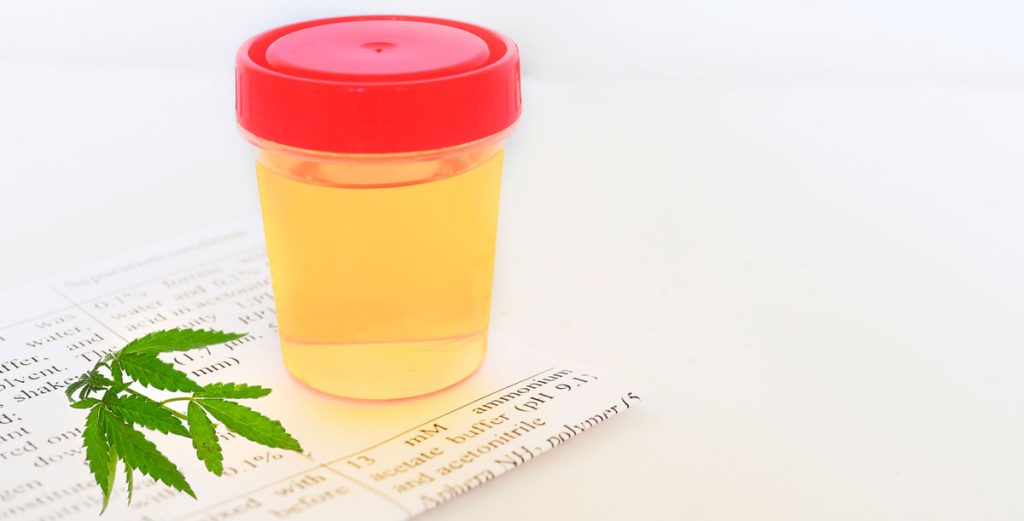By Tom Badstubner, Marilyn Dempsey, Mike Dodd, Rick Schweitzer, and Steve Guglielmo
The GAWDA Consultant Program is a GAWDA member benefit that is included as part of your member dues to the association. It is consistently rated as one of the most valuable member benefits that GAWDA provides. Between the four of them, GAWDA’s consultants bring more than 100 years of industry-specific experience to the association.
Recently, GAWDA’s Consultants gave an industry roundtable presentation during the Spring Management Conference in Philadelphia as well as presentations at GAWDA’s Regional Meetings, to go along with their monthly Safety Manager Safety Meetings.
Thank you to Tom Badstubner, GAWDA’s FDA and Medical Gases Consultant; Marilyn Dempsey, DHS, EPA and OSHA Consultant; Mike Dodd, DOT Consultant; and Rick Schweitzer, Government Affairs and Human Resources Consultant, for lending their time and expertise to discuss these important topics. The following is a lightly edited transcript of that conversation.
GAWDA Media: Is there anything time sensitive from a regulatory perspective coming up in the later summer that GAWDA members need to be aware of?
Tom Badstubner: From an FDA perspective, there are no new regulations coming up during that time. We think that the soonest that the FDA will publish appropriate medical gas regulations will be in October 2024 and then we will have at least 18 months after that to change our procedures, labels, etc.
However, in June of every year, the FDA regulations say that drug manufacturers like oxygen manufacturers need to check what is called their FDA drug listing. Make sure your cylinder sizes are appropriate and the supplier and label are correct. That happens in June and December each year. If you have not already done so, you can check your own drug listing at: https://bit.ly/dailymednlm… or contact your registrar for assistance.
GAWDA Media: Marilyn and Rick, you did a presentation at the Seven Springs Regional Meeting. For those members who weren’t able to attend, can you give a summary of what you discussed?
Marilyn Dempsey: OSHA has established a heat injury and illness prevention work group and what they’re trying to do is evaluate, provide input and recommendations for OSHA’s heat illness prevention materials in order to develop regulations. They’re going to publish a written report that articulates what heat exposure is and ways to quantify heat hazards.
They already have one recommended method and that is to use a hydrometer, the temperature and humidity are factored together to determine what the heat index is. OSHA has come up with a training program on how to recognize the illnesses from heat exposure and preventative steps for an employee or employer.
Currently, they are considering the California Heat Illness Prevention Plan as a base for the regulations. Hopefully, that will not be the case, because it is quite involved. There are two other groups that have made heat illness prevention plans. One is UC Berkely and the other is the University of Houston at Clear Lake. The UH program is quite doable. If it comes to pass and we must do something about it or write a program, that will be one of the programs I would consider.
The other hot topic from OSHA is that they are making a “learning conversation” into safety as a core workplace value. What they are trying to do with that is create a means to evaluate safety and health programs. They want to see employers institute safety and health programs, with a step-by-step guide, which includes practices, procedures, and policies. They’re having “learning conversations” to hear from stakeholders (businesses). They want to know what “safety means to your company and how does your company instill safety into your employees?” They want to know what the problems and roadblocks the company has faced and if your program has shifted over time.
GAWDA Media: In layman’s terms what is the difference between a law vs. “areas of emphasis” or “learning conversations?”
Marilyn Dempsey: Areas of emphasis are where OSHA is focusing inspections; like the Heat Emphasis program. The Heat Illness program has been around since 2011, but for the past two years there’s a national emphasis program where they are really going out and doing inspections for conditions that could lead to heat-related illnesses. These are wall-to-wall inspections, which means they will look at anything if they suspect there might be a potential for causing injury through heat to an employee.
Their new program, this new emphasis that they have, is in the discovery phase – where they have “learning conversations.” OSHA appears to be pushing for full Safety Programs with policies, procedures, and training. This is about where they think employees should be.
Rick Schweitzer: You have always had, under the General Duty Clause, an obligation to protect your employees from heat injury and illnesses. The fact that this administration wants to emphasize enforcement in that area is related to their concerns about Climate Change and their concerns that we have had an increase in, particularly summertime, temperatures, and that that has affected workers. They want to make sure that employers are addressing those concerns.
There has also been in the works a formal rulemaking on heat injury and illness standards, but that has been held up because OSHA doesn’t have specific authority from Congress to come up with that kind of a rule. And so, they are trying to see if they can come out with it under the General Duty Clause or some other provision of the Occupational Safety and Health Act.
GAWDA Media: Along with the administration’s emphasis on climate change, the big topic at Seven Springs was the Canadian wildfires and the smoke that has come from them. Are there any rules or best practices that companies have to take if they’re potentially in a place that could be impacted by fire or smoke?
Marilyn Dempsey: Yes, recently we put out a safety alert from the CDC and NIOSH about things that they can do to protect their employees, specifically if they are in an area where smoke might be or if they have employees with known conditions like asthma or other related illnesses. The Safety Bulletin is on the GAWDA website, and I highly recommend that people go and read it.
GAWDA Media: Is there anything else that is a hot topic out there right now or that you may be getting an influx of member inquiries about?
Rick Schweitzer: We are getting a lot of calls about DUIs, positive drug tests, employee abuse of products and related human resources issues. I would mention that there will be, probably over the next six months, two new options for drug testing of CDL drivers.
One is to allow employers the option to test oral fluids instead of urine samples. The important distinction is that saliva is taken with a swab in the mouth, and therefore all the collections are observed and there is no opportunity for either adulterating or substituting your sample. We still have to wait for the Department of Health and Human Services to certify at least two labs to conduct oral fluids testing, so it’s going to be maybe six months before that comes to pass.
The other option will be testing of hair samples as opposed to urine samples. And, again, this would be the employer’s option. The testing of hair samples is much more sensitive than urine testing. Trucking companies that are testing drivers or potential drivers for hair samples, in addition to urine testing, are finding that they are getting 3-4 times as many positive results from the hair tests compared to the urine tests. And, in particular, they are effective at detecting regular use of cocaine, methamphetamines, and opioids because those are undetectable in urine after 3-4 days. So, if you have a regular user of any of those other drugs, they stay in your hair but not your urine. So, again, we’re waiting for the final procedures to come out of the Department of Health and Human Services. Probably in the next several months we’re going to see a final rule on that.
My recommendation to member companies is that they talk with whoever they use for their drug testing collections, their laboratory or clinic, to see what will work for them best.
GAWDA Media: In New York, we have legalized adult use marijuana now. If I’m a CDL driver, I still can’t use drugs, right?
Rick Schweitzer: Yes, that is correct. It is prohibited for you to use marijuana even if you’re going to be on vacation for two weeks. You may not use marijuana, because if you test positive for it, you will be prohibited from driving a commercial motor vehicle. Even though it isn’t an impairment test. That’s really the loophole here. We don’t have an impairment test for marijuana. It is, to a certain extent, unfair to those drivers who can drink a six-pack of beer and a week later they can take the test and obviously they will be fine to drive a truck, they won’t test positive for alcohol. For marijuana that isn’t the case.
GAWDA Media: Is that something that most companies and, more specifically, drivers are aware of?
Rick Schweitzer: Yes. I hope they are, anyway. Certainly, there have been a number of incidents where drivers have tested positive because they either used marijuana themselves or been a situation where somebody else was smoking and they got second-hand smoke and they ended up testing positive even though it may have been several days later.
Marilyn Dempsey: Doesn’t that include other forms of ingesting THC as well? Because the THC is fat-soluble. So, it’s gummies, brownies, cookies and potentially body lotions. All those things that have THC in them can result in a positive test.
Rick Schweitzer: Yes. CBD oil and CBD products are very popular now for a variety of medical reasons. But they are not a regulated product, so, depending on the concentration of the THC in those products, you might end up testing positive even though the product that you took was supposedly just CBD or hemp. It was supposed to be below the .03% concentration of THC that is the threshold for a positive test, but, because the concentration of THC can vary dramatically in each product, a positive test can result.
Marilyn Dempsey: ASTM is developing standards for that. But the industry seems to be growing at such a rapid rate that the smaller dispensaries don’t have the ability to measure like that. They may say, “we’re taking just the CBD,” but they don’t have the laboratory to test to ensure that they’re extracting all the THC out.
GAWDA Media: Is there a mandate for how often CDL drivers have to be drug tested?
Rick Schweitzer: There are several different types of tests that are required. There are mandatory tests for anybody who has a commercial driver’s license. A CDL driver must pass a pre-employment drug test and be subject to random drug tests throughout the year. The employer must test at least 50% of the drivers in random selection on an annual basis and you have to be able to show you have tested 50% of your company drivers.
Marilyn Dempsey: Is it still different for drugs and alcohol?
Rick Schweitzer: Yes. The annual random testing rate is 10% of CDL drivers for alcohol and 50% for drugs. It used to be 25% for drug testing but, because there were so many positives, DOT increased the percentage. So, you have to do random testing, pre-employment, and post-accident testing is required as well. If a driver is in an accident that meets certain standards, the driver has to take a drug test. And then, if there is any reasonable suspicion that the driver has used illegal drugs, the company has to send that driver for a drug test. And, if the driver ever has a drug or alcohol testing violation, there is also a return to duty test that is required. You have to have a negative test before you come back to work and also be subject to periodic testing for up to five years thereafter. Those are all spelled out in the regulations, and they apply not just to truck drivers but all transportation workers who are subject to DOT drug testing requirements and all federal employees and contractors.
GAWDA Media: Tom, how about in the FDA world, any trends you’re seeing?
Tom Badstubner: Nothing like that. The FDA standards are stable right now. Enforcement is also pretty stable.
I would like to mention the remarkable amount of difference that GAWDA members can make in their own states. For example, Haun Welding is working in the state of New York and their assemblyperson to get the regulations changed about medical gas supervisor training requirements to match the federal requirements. Mark Haun and Josh Haun have been working for many years on this effort. And it looks like there is a chance it could pass this year, and that’s solely because a GAWDA member got involved with their state. And it will benefit all GAWDA members in New York. We can make a difference, we really can.
GAWDA Media: You are all involved in the Safety and Government Affairs Committees. Is there anything you’d like to mention about the work the committees are doing?
Marilyn Dempsey: The Safety Committee is really doing a very good job of getting pictograms out. First, they reviewed all the safety practices. And now we’re making infographics. So not only do you have something that you can train your people on, but you can put this one-page poster up to remind people about fall protection or forklift training. And you can post the infographics and have a reminder so that when somebody is coming through your break room, they can just look at this poster, it gives them a quick takeaway and keeps safety at the front of their mind. Because the more they think about safety, the more it drives home the fact that the company really cares about them. That is huge.
I strongly recommend that any of the owners or C-level employees attend the safety trainings with your employees, do it. When you do, the message will change from “they have to do it” to “we are doing it!” It’s now part of the company culture..







